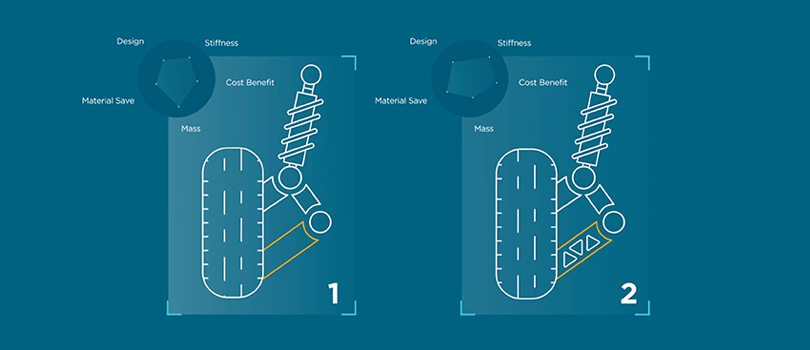
Structural Optimization Explained
Structural optimization is a simulation-driven design technique that lets teams identify and explore high-potential designs – and reject low-potential ones – earlier in development cycles. Manufacturers can use structural optimization to enhance their product designs and generate lightweight, manufacturable concepts. They can also use it to refine products and validate them virtually, leading to innovative, cost-effective design solutions.
What is Topography Optimization?
Topography optimization is a simulation-driven design technology that helps manufacturers design and optimize thin-walled parts. Local shape modifications improve vibration characteristics, and topology optimization software can suggest the location, shape, and orientation of these modifications – which often outperform a traditional layout.
What is Topology Optimization?
Topology optimization is used to design optimal, manufacturable structures. When faced with complex parts carrying multiple loads, all packaged into a tight design space, topology optimization helps designers identify a material layout that maximizes stiffness and minimizes mass.
What are Size, Shape, and Free-shape Optimization?
Size, Shape, and Free-shape optimization are used to fine-tune the formation of structural product concepts. By finding optimal solutions for key product characteristics like cross-sectional thickness and material choice, and by refining areas with high stress concentration, these tools reduce the risk of product failure.
What is Free Size Optimization?
Free-size optimization optimizes machine structures and parts stamped from tailor-welded blanks, but is most widely used in the design of complex laminate composite components. It helps engineers find the optimal thickness, ply shapes, and stacking sequence for these complex composite materials.
Ready to see how simulation-driven design can transform your business?
Contact Us
Register now for your FREE 15 day trial!
Learn how the simulation-driven design platform Altair® Inspire™ helps you establish a faster, more flexible, and more cost-efficient process to create innovative products.
The free trial gives you access to all Inspire products and will end automatically after 15 days.




